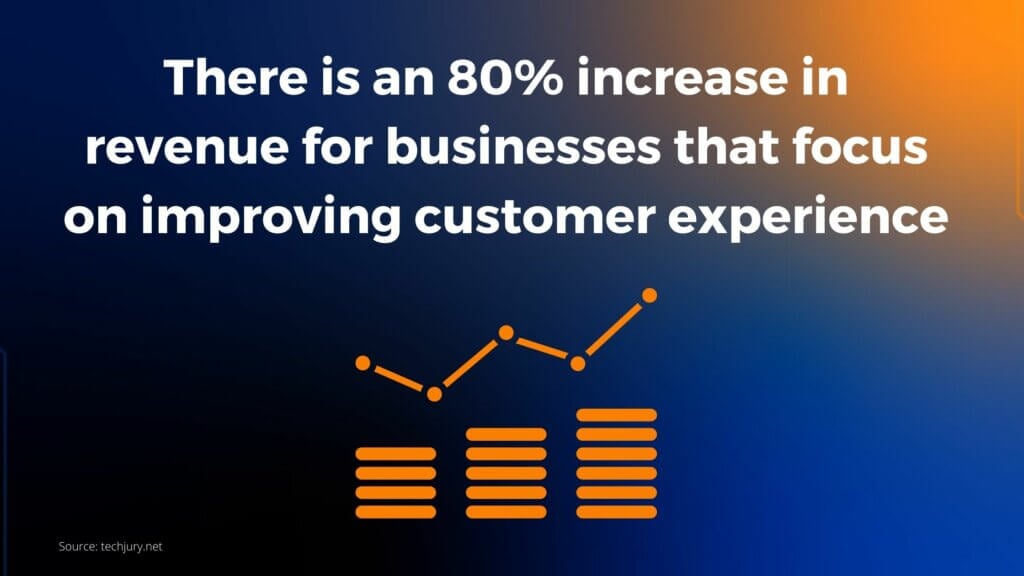
10 problems to avoid in the SaaS product company in 2022
The Saas market is evolving in a very dynamic way. Digital transformation is a fact and we start to talk about it already by using the past tense. Recent companies settle in the space of the Internet and try to define their new place.
8 min read
In this Article:
- Security auditing is crucial for Saas
- To scale a company in the thicket of digital transformation, you need a team that can monitor and optimize these processes.
- Why DevSecOps is so valuable for Saas environment?
Watching Netflix, calling on Zoom – the global market is growing daily and SaaS solutions are expected to contribute to global revenues of $ 185.8 billion by 2024.
All the “magic” of Saas solutions is a long list of profits, indications of, among others, increasing customer loyalty or constant budget income from subscriptions. So, if cloud solutions are so good, why is the transition to this model problematic? How not drown in the Saas business ocean, when you have to swim faster and faster every day? I asked that question to Mateusz Romanów CEO and co-founder of KYOTU Technology.
Dorothy Uslu (Content Marketing Manager) : According to InformationAge, the value of the SaaS market will reach around $121m US at the end of 2021. There are also over 15.552 SaaS companies in the world according to a June 2019 report from Crunchbase and that number is growing every day. Growth of the SaaS market was boosted even stronger as lockdowns caused by coronavirus continued and companies implemented remote work as a new normality for their workers. The world changed and businesses that we know before 2020 are not going to be back again. Is implementing Saas solution really the only way for the companies to survive in 2022?
– The short answer is – in many cases yes, it is the only way. Covid has made us really change our purchasing habits in industries such as furniture, fashion and gastronomy. This has led to a “tiger” emerging to chase the industry and eat those who stay last. That is, those who are reluctant to implement digital transformation, thereby losing a key part of the market and staying at the end. And then the “tiger” devours them. But Saas can also have a dark side…
If there is no other way.. then what should we be afraid of? What can be done to avoid potential danger?
– I would answer in four points …
1) transfer processes and documentation online, preferably to the cloud
2) automate everything possible – communication with the client, support, service, customer service, handling inquiries, complaints
3) customize sales and communication – both as contexts – different sales on Black Friday, different at the end of the year, different in spring, as well as personalized for the client: “for the oak table that you already have, our designer Agnieszka chose three colors of upholstered chairs that match perfectly. Some of them won the Red Dot Award in 2020 – do you want to see what they look like in your salon? Here is the visualization we have prepared…”
4) be open to new things – implement things, not as the first, not to be experimented on with you, but as the hundredth, certainly not the thousandth. Then you are behind and the “tiger” is close. First from the list … scaling.
To automate where possible to improve time management and resource allocation- is that a solution?
– Of course! Toyota has long calculated that maintaining high stock levels pays off less and generates much greater costs than production on an ongoing basis for orders flowing in real-time. It is enough to implement a system that will handle such orders, then the cost of purchasing materials and a high stock of products “in stock” drops. Covid messed up this optimization a bit because of those who had stocks. For example, semiconductors could sell them for a large profit, but this is a unique situation that confirms the need for better and better management of time, production, and people. That is, in short, the key resources that each company has at its disposal.
Maybe scale is all about making product adoption easy? So, are we always ready for the unexpected?
– Just what is easy product adoption? In my experience, any company that is aware of this importance thinks about it all the time. One thing is certain – the higher the threshold for entering the interaction with a product or service, e.g. 10 fields of the purchase form to be completed instead of 5, the need to register instead of purchasing without creating an account, the need to book an appointment instead of the possibility of arriving ad hoc – the more difficult it is to convince the customer to interact. We always choose that which is easier and more convenient for us. Make your process easy and simple and your customers will start switching from competing companies. In this way, you can even revolutionize your segment, as for example, Netflix has done.
How does scaling influence sales strategies? What should be adopted to what? Sale to Scale or Scale to Sale?
– It depends. But don’t guess how it is with you. Make this decision based on data from your sales system and trend analysis. Do customers wait too long for delivery? You misaligned your sales to scale. Do you have 5 people who are to ship products and only 2 work? The scale is not well suited to sales. Don’t guess – base it on data. If you do not have data, you must implement a business intelligence system that will give you such data. Excel is often not enough.
The second big “trouble maker” in Saas is infrastructure. Actually -efficiency of that infrastructure. Why is it so important to monitor all infrastructure, including cloud, containers, servers, and storage?
– The most common problem related to the cloud or, more broadly, infrastructure is surprising and unpredictable costs. To scale a company in the thicket of digital transformation, you need a team that can monitor and optimize these processes. We have regular cases where a customer switched to Cloud, and paid $2-3k for system maintenance in the first months until he suddenly jumped at $50-60k and didn’t know what to do with it. There was a shortage of monitoring, optimization and processes. The security of this process is equally crucial, which is why we call it SecDevOps for Security-Development-Operations. Our team that provides these services is burdened the most in the company. There is a huge demand for optimization and monitoring of infrastructure costs and company resources at suppliers such as AWS, Google Cloud Platform, or Azure. We also have a lot of work on on-site installations – i.e. servers at the clients. Taking care of it is a must-have when you scale your business and you don’t want it to simply stop at some point.
According to Market Research Future, only 8% of cloud services actually meet the data security requirements. You have to admit, this is a dangerously low percentage. Why do you think security auditing is crucial for Saas?
– Therefore, because the number of bots and threats on the web increases exponentially. So the question is NOT WHEN only WHEN some virus starts penetrating the system. Therefore, from 2020, we will design systems with “security by design” in mind – you have to think about security from the beginning, then it is affordable. Problems and high costs begin when it is necessary to rewrite the entire system from scratch to deal with critical problems, which we also often do – this is not the optimal business path.
Security is often in the hands of developers. Are DevSecOps some kind of superheroes for Saas or developers don’t have the tools and processes in place to address security? And in the end, why DevSecOps is so valuable for Saas environment?
– In SaaS, performance, stability, security and scalability are key. It just so happens that these guys are the guarantee of taking care of exactly these four parameters. Developers, especially backend CIs, naturally support this process, but they often lack knowledge and tools. That is why SecDevOps is so important in any SaaS project.
Many business owners are focusing on the visual side of their Saas product. Statistics show that nearly 90% of users claim they stop using an application after having a bad experience due to poor usability. Is the effectiveness of UI/UX design still so crucial and can be a big problem for companies in 2022?
– UX and UI were critical in 2016, 2017. Today, in 2021/2022, CX, or Customer Experience, user experience is the key. What he returns to his family with after visiting a car dealership “I easily ordered a new pair of wipers. When I arrived, the mechanic was waiting for me, they had delicious coffee and a convenient application that allows you to monitor after how long the car will be ready” instead of “I waited 3 hours for service, they have a brothel there, and a friend told me that the competition has an app in which everything goes wrong and goes not smoothly”. It is not only the UX and UI of the application or the form, it is the CX of the entire process that decides whether the client will return, recommend us, or bring his husband/wife/children to us later.
In an Internet Trends Report by KPCB, we can read that people interact with their phones about 150 times per day. Companies are trying to find that micro-moments when a brand should meet the customer’s impulses and answer their questions and satisfy their needs. What does ignoring micro-moments can cost SaaS products?
– Not understanding the client’s micro moments means offering them services or products at the wrong time. It never works. So, this kind of communication or sales is a burnout of budgets that do not bring results.
Many SaaS solution providers have to balance their budgets. Where can savings be sought?
– Process automation, AI / ML implementation (Machine Learning Artificial Intelligence), cloud optimization, security by design and a team that is involved, i.e. works because they want to and not because they have to (it’s another matter because EB), but it is also an easy way to optimize costs. One employee who does what he is good at is more effective than three employees pushed into the tasks they feel bad at.
How about unused SaaS licenses? Better license management functionality?
– If such unused licenses generate costs and consume resources, they must be optimized. It is simply not ecological and therefore not recommended for anyone. The license management process can always be improved. Adobe and Jira have been doing it for 15 years and are still learning it. There is something to work on.
Last but not least, social proof. Is the voice of the user still going to be so loud in 2022? Having legit reviews can really boost SaaS to the sky?
– Absolutely yes! Ratings and social proof are still the most important parameters on the basis of which EACH of us makes decisions. This cannot be deceived. This is how we are programmed. We have to consult; we like to hear stories. The opinion of users, publicly and non-publicly expressed, is crucial. That is why systems for aggregating opinions, automatic tests examining customer satisfaction, ratings on Google My Business and what employees write about us on HR portals are so important.





